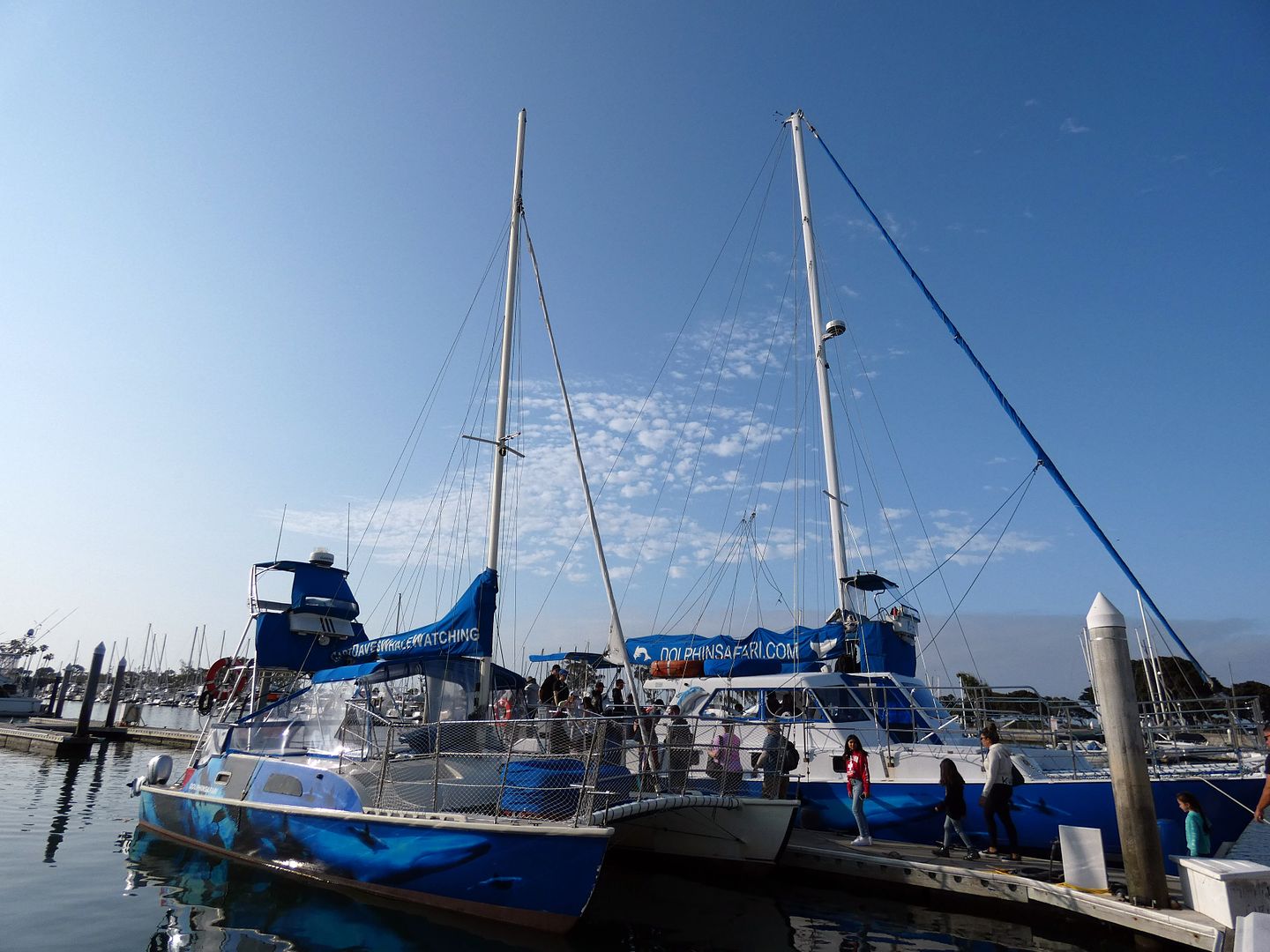
But me, I like to spend most of my time inland—where no tide will tear the sunglasses off my face or try to envelop me in a salty coffin made of sea foam and regret.
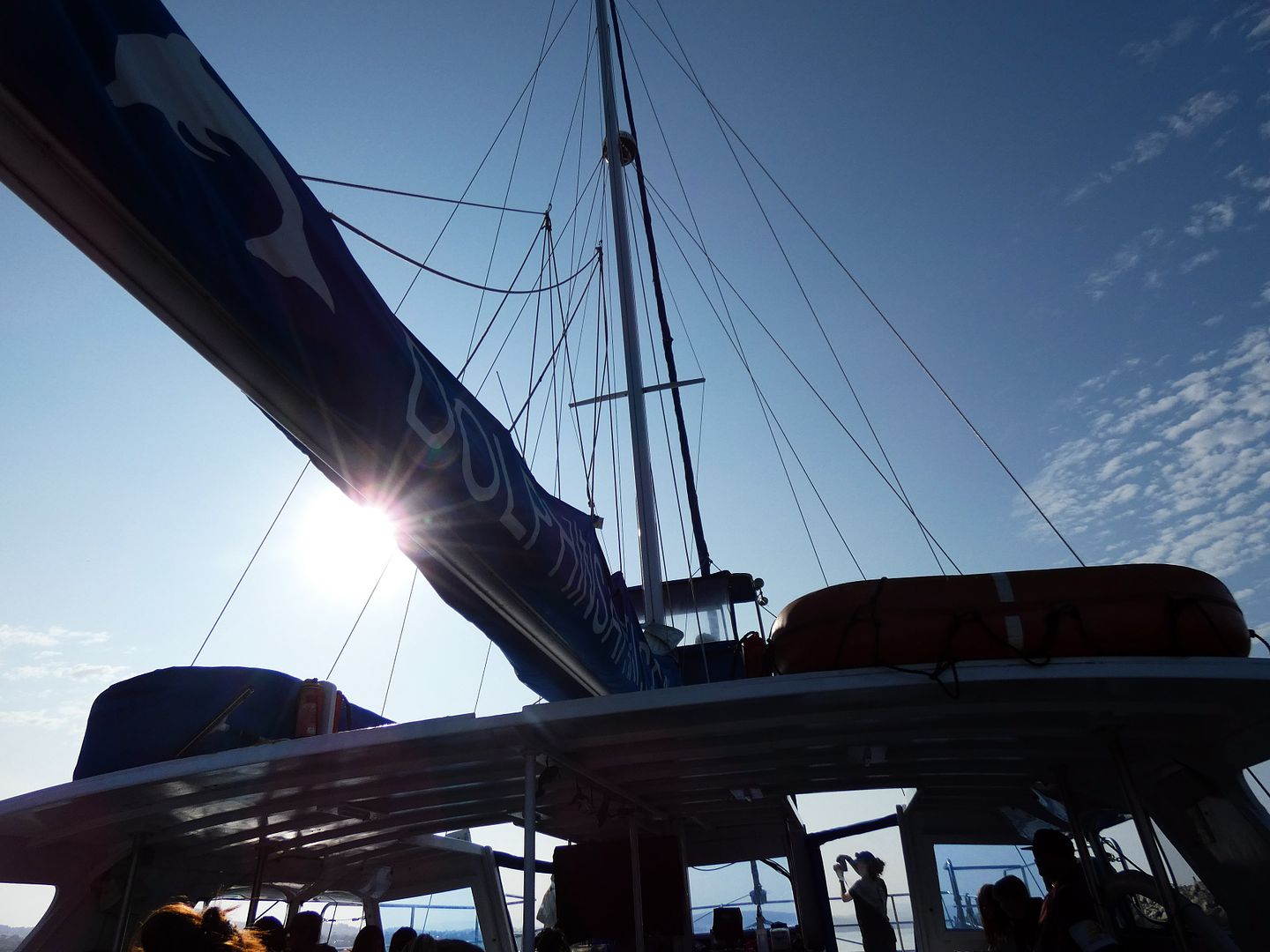
Last weekend, though, I had the chance to join Capt. Dave's Dolphin & Whale Watching Safari—which departs out of Dana Point, named the first Whale Heritage Site in the U.S. earlier this year. It seemed like if I was going to try whale watching again, this was the place to do it.
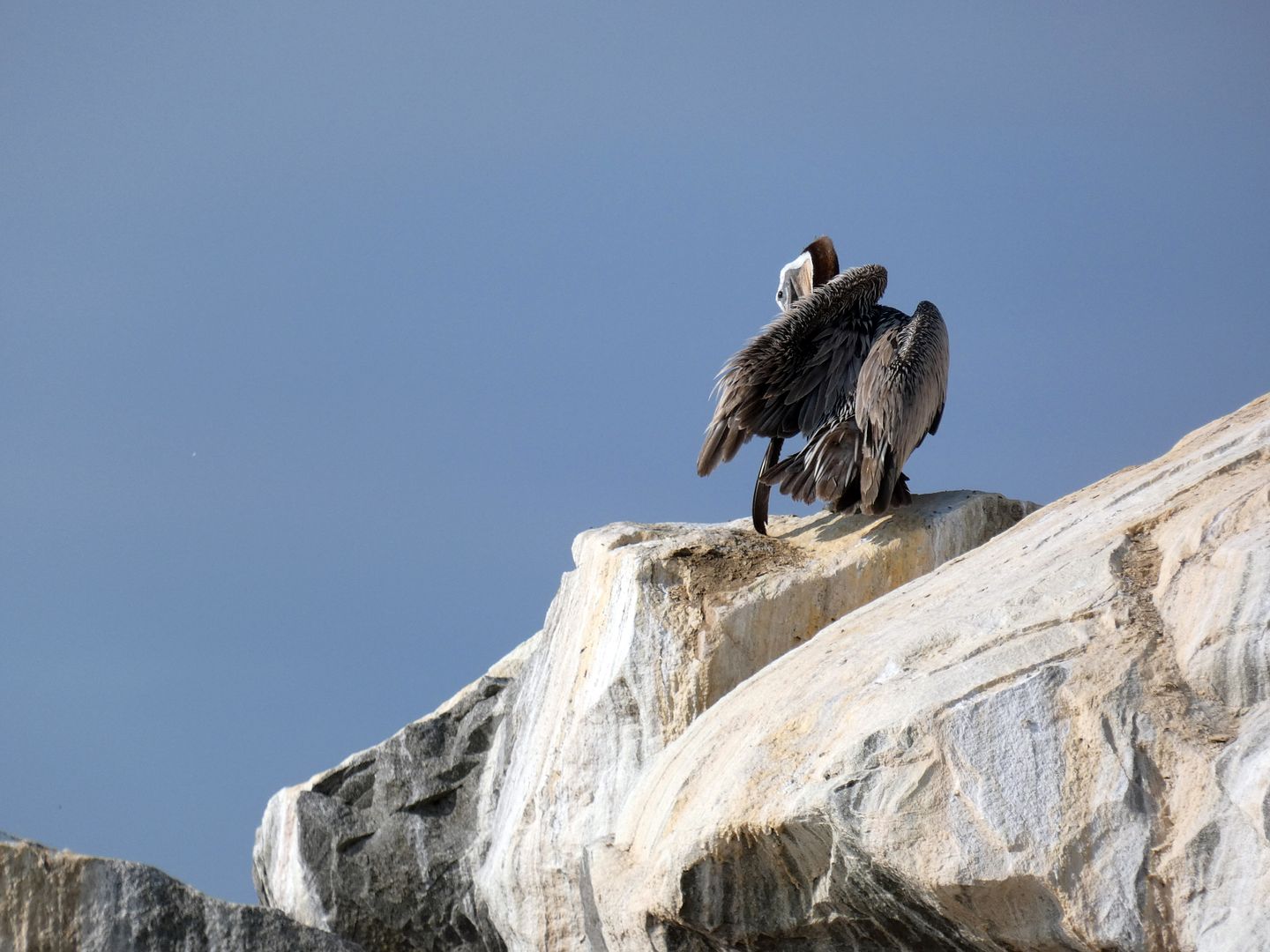
So I returned to Dana Point Harbor—where I'd gone kayaking with the Ocean Institute back in 2018—and this time emerged into the ocean from beyond the breakwater (and the pelicans that were perched there during our 8 a.m. departure).
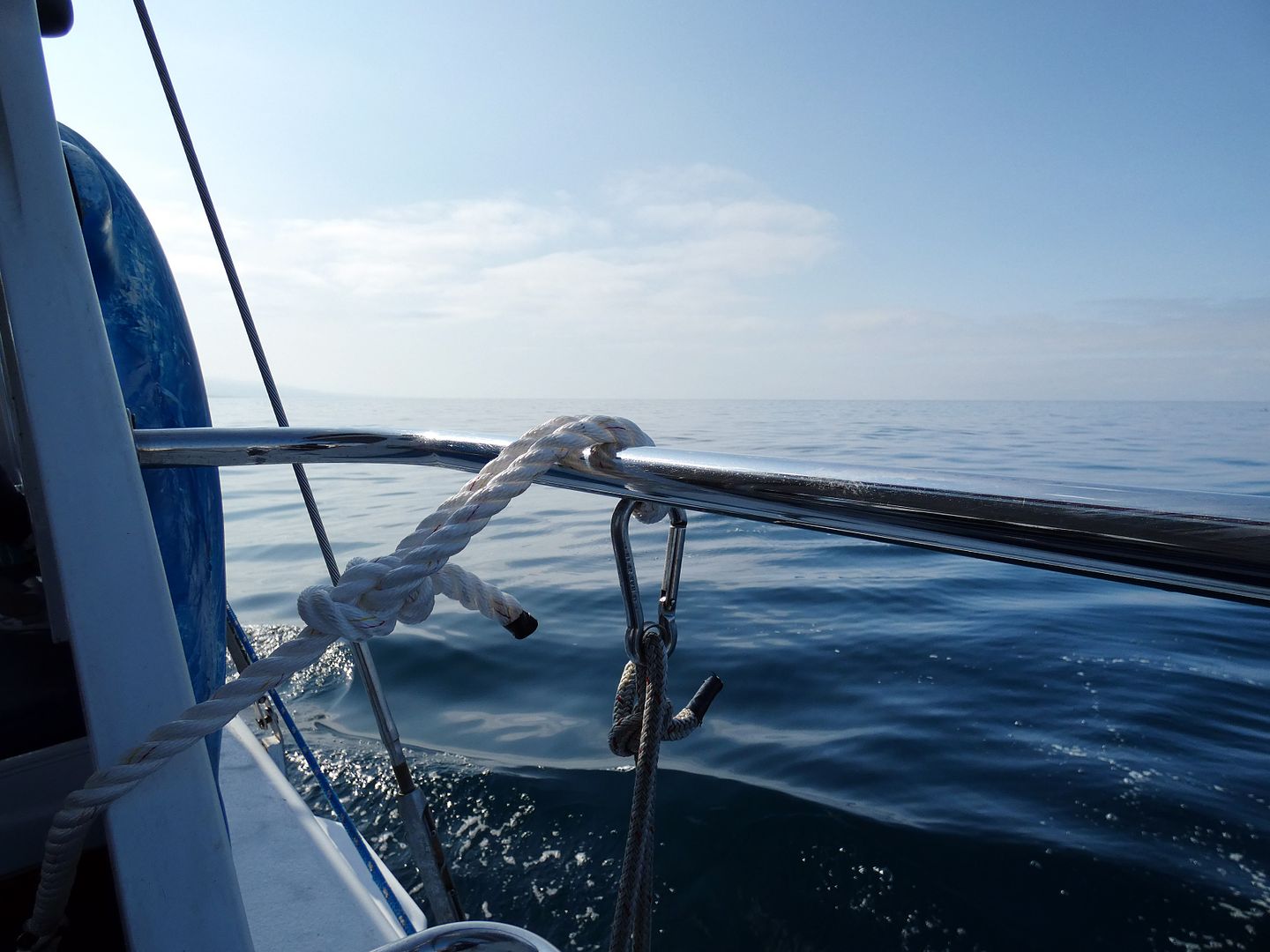
Besides whales, this part of the Pacific Ocean also contains more dolphins per square mile than anywhere in the world.

And Marie, our captain aboard the high-speed catamaran called Manute’a, promised she'd pause in a pod of dolphins if they seemed curious and friendly enough to want to hang out.
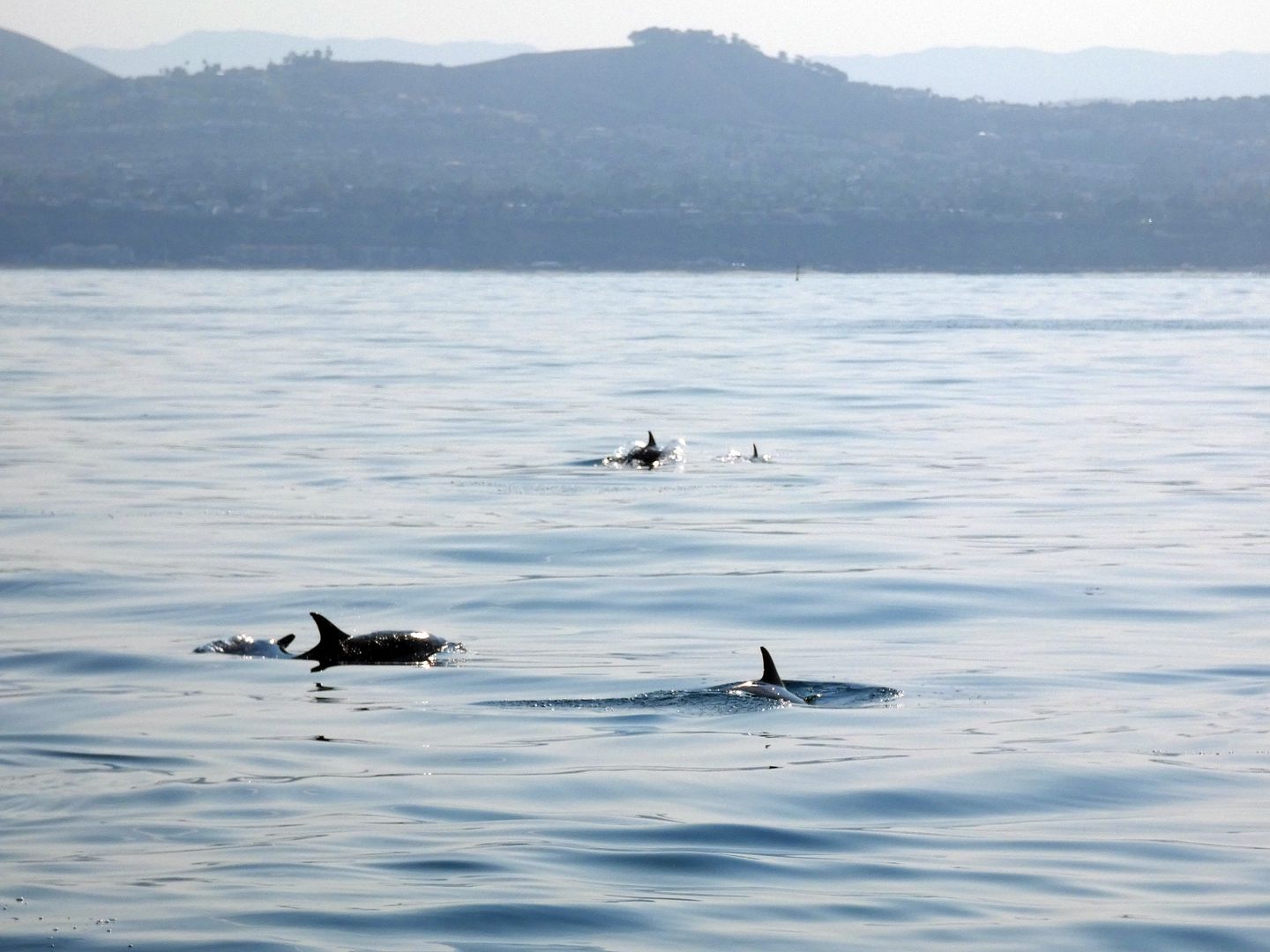
Boy, did she deliver.
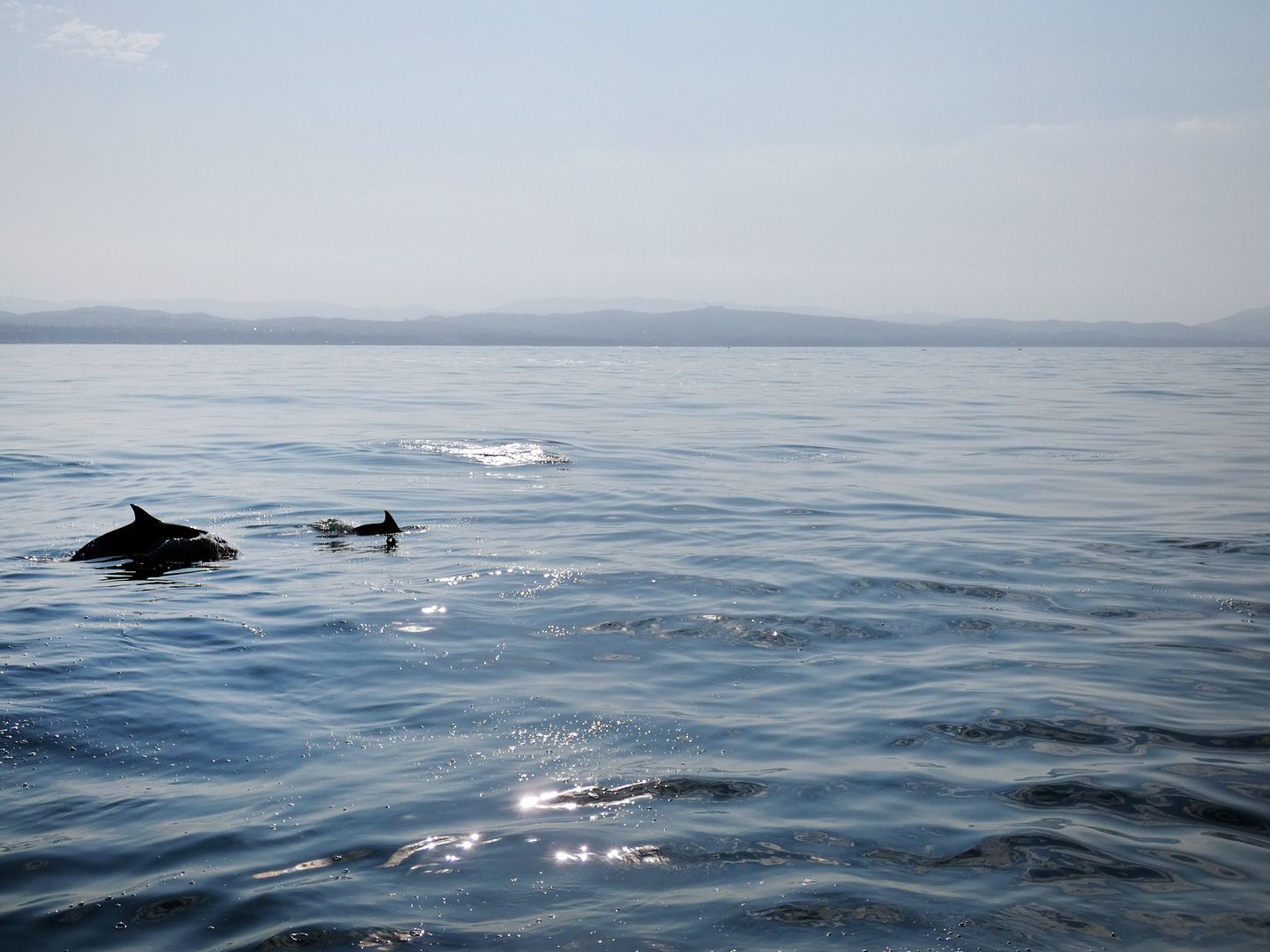
It's calving season in July and August for the common dolphin (Delphinus delphis)—and we were blessed to see the little babies swimming alongside their mothers.

And unlike many new mothers in the Animal Kingdom, they weren't skittish.

Dolphins are incredibly social—and the ones in this particular pod would pop their heads up to say hi and seemed to respond to the sounds of our voices.
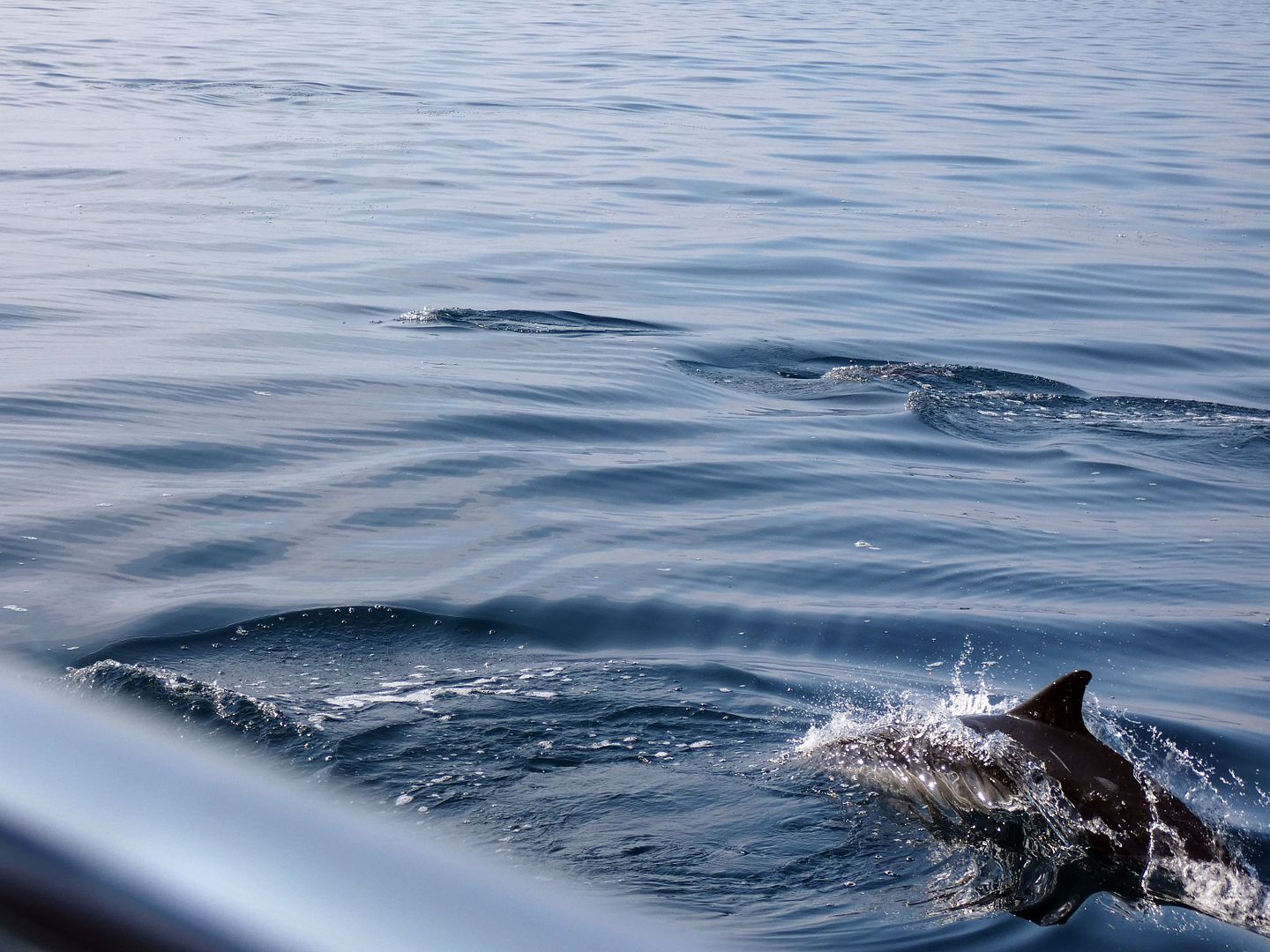
They're so playful—they'll swim right alongside a boat and even "race" it.
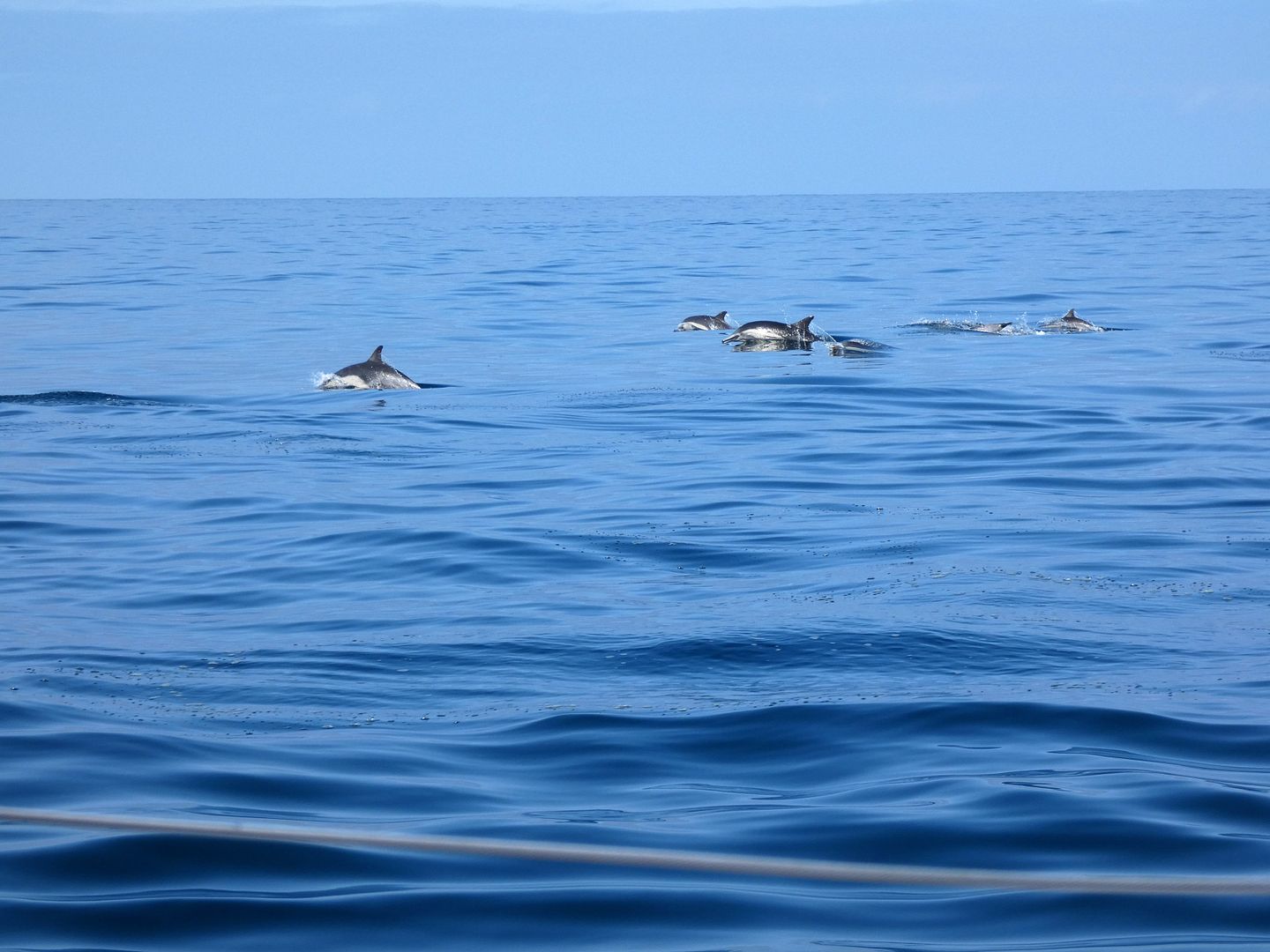
I braved seasickness and an unsteady gate just to get a good look at these so-called "toothed whales"...
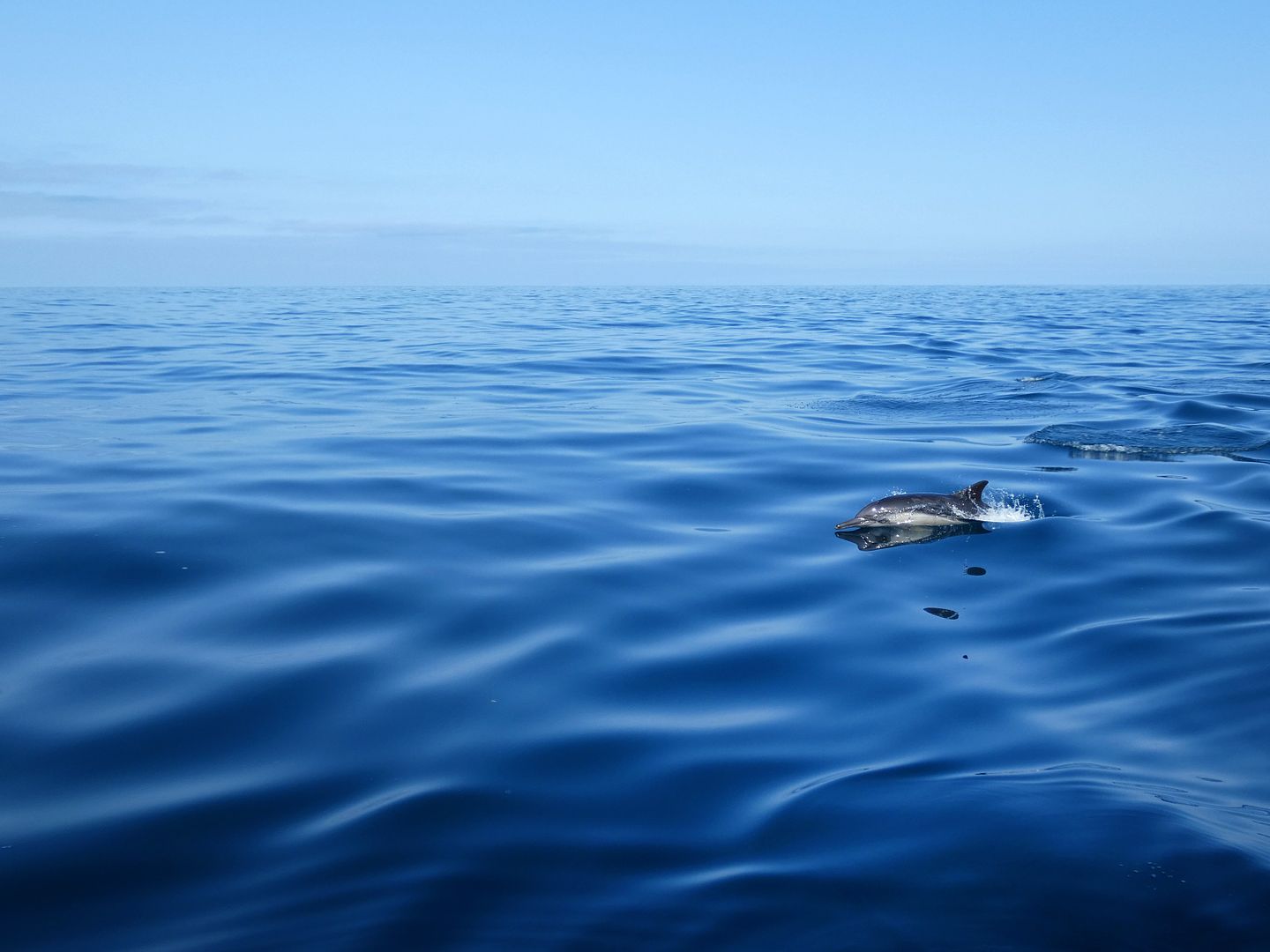
...which seem too friendly to ever actually bite you.
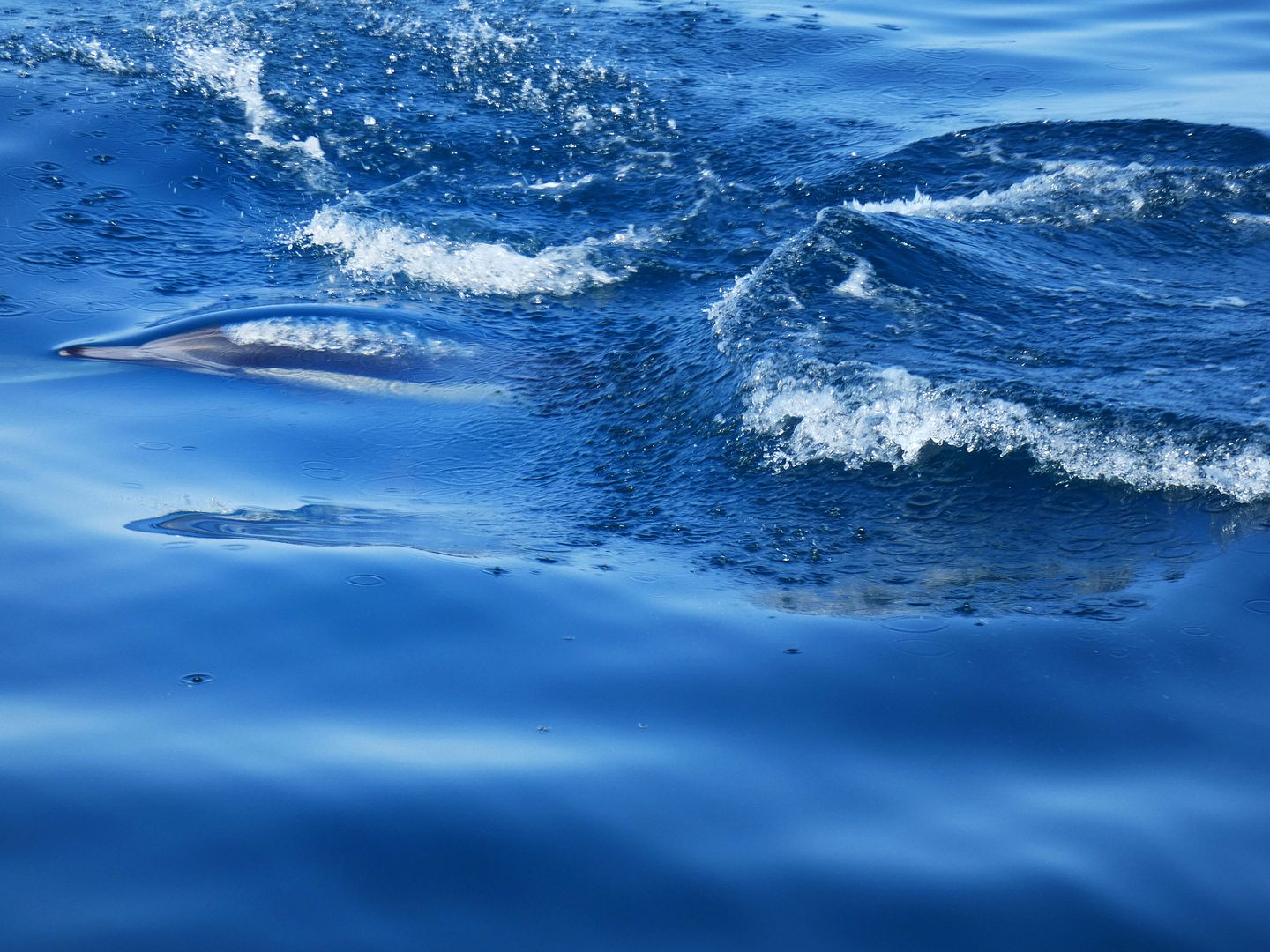
There's even a net at the bow of the catamaran and you can lie on top of and reach down to boop any dolphins that present their noses while swimming right under the boat.
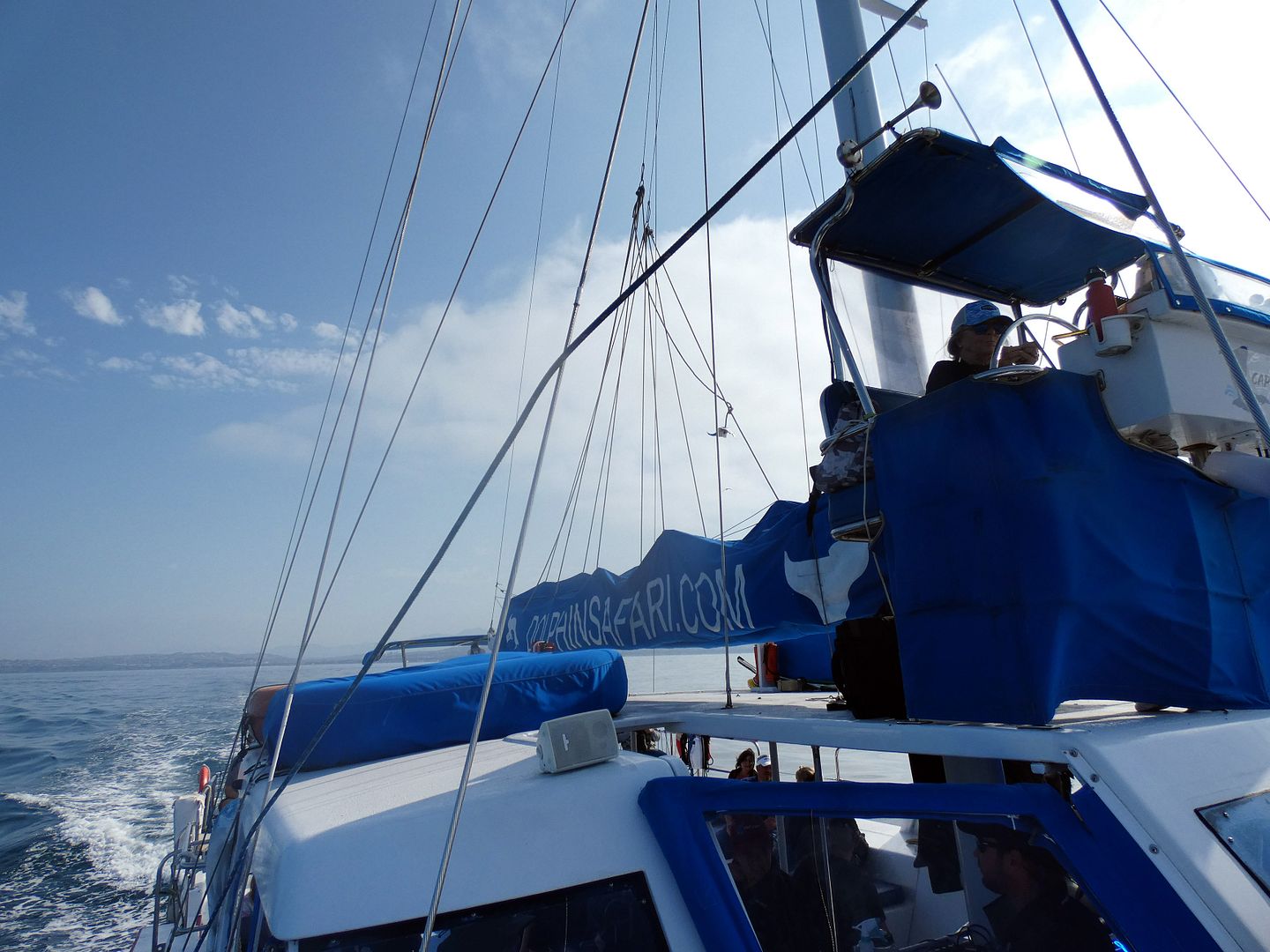
As we transitioned from dolphin viewing to whale searching, I climbed atop the highest point on the main deck on the bow to get a good look and scan the horizon.

That's where I caught my first glimpse of the blue whale (Balaenoptera musculus) that would delight us with a spout and a fluke up dive—which I wasn't quick enough to capture—before leaving behind its glassy footprint on the water's surface.

Fortunately, after spending 15 minutes underwater, that same blue whale reappeared at the surface and lolled around awhile (scientifically defined as "logging")...
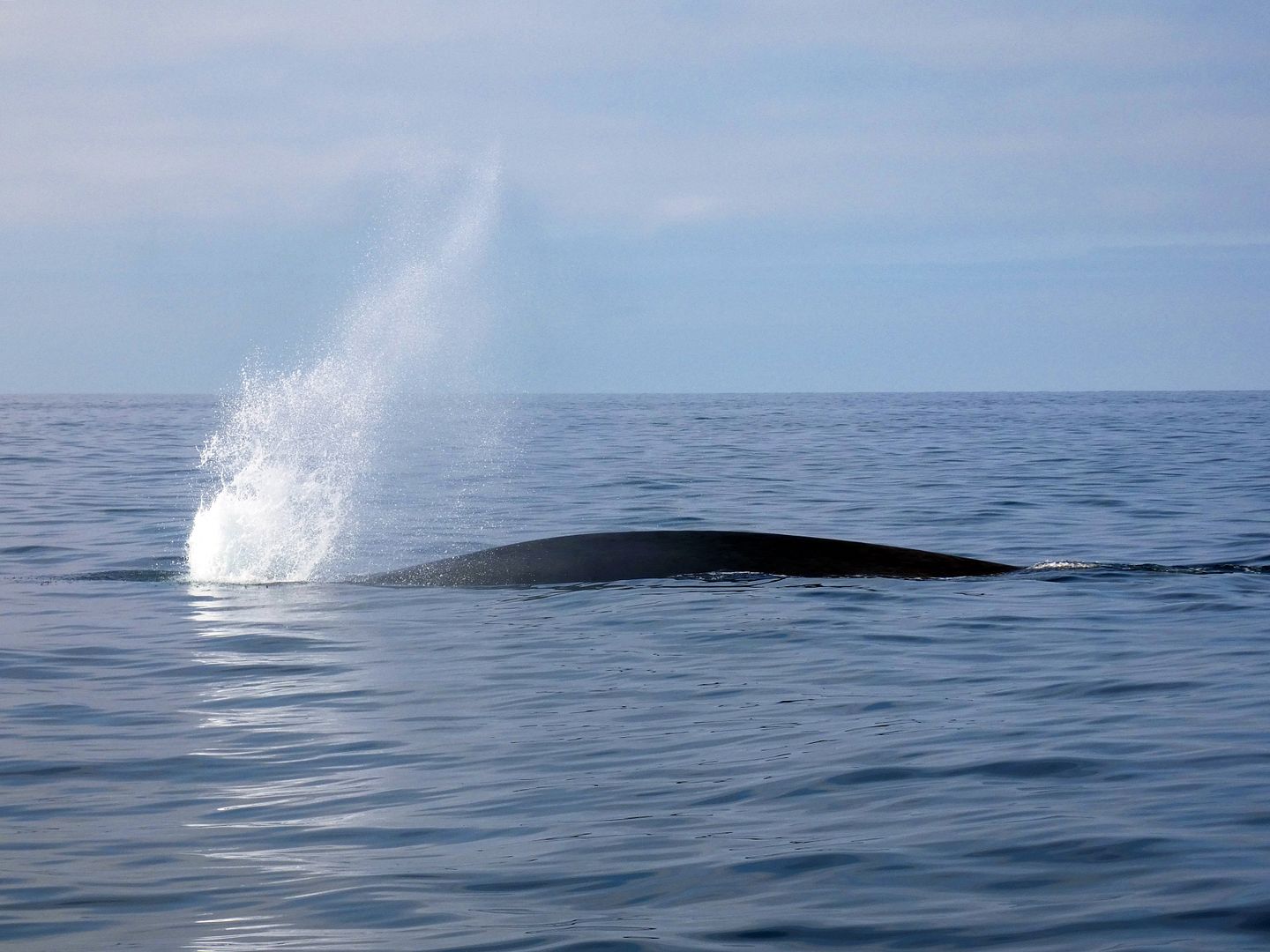
...spouted...
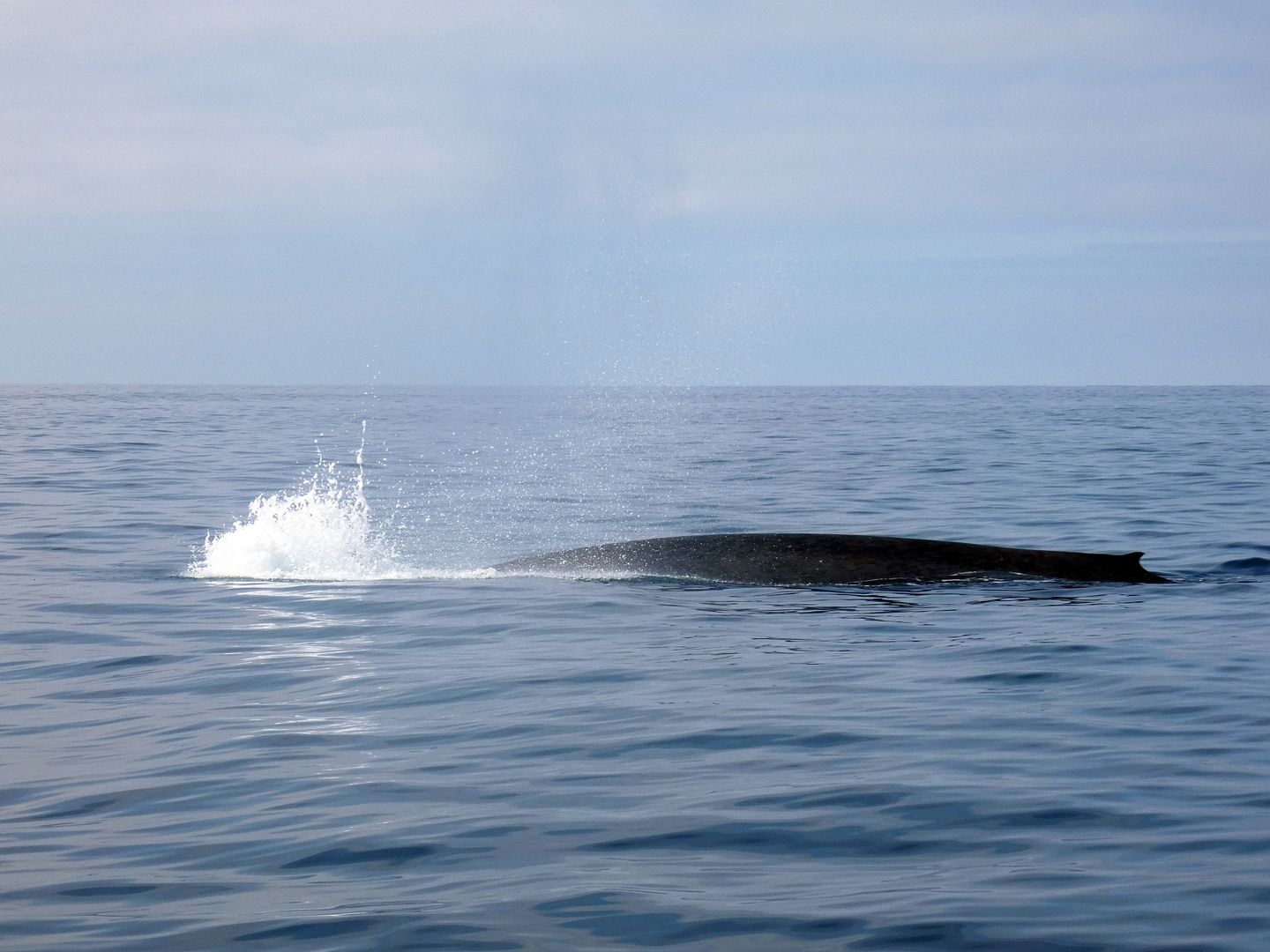
...and bubbled up before diving back down for another 10 minutes or so.
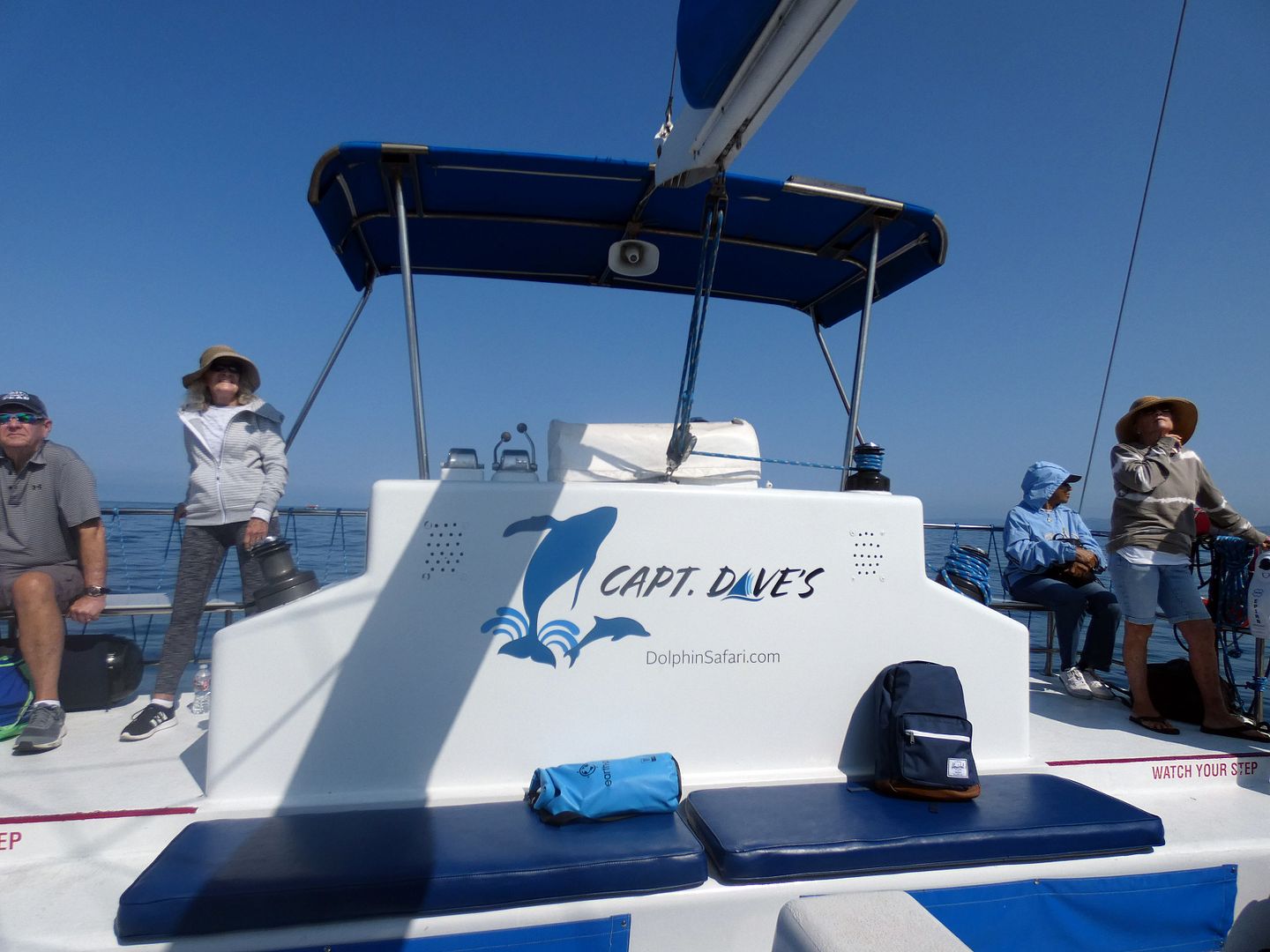
We waited and watched the clock. It came back up and dove back down again. And we decided to wait for it to make one last appearance.
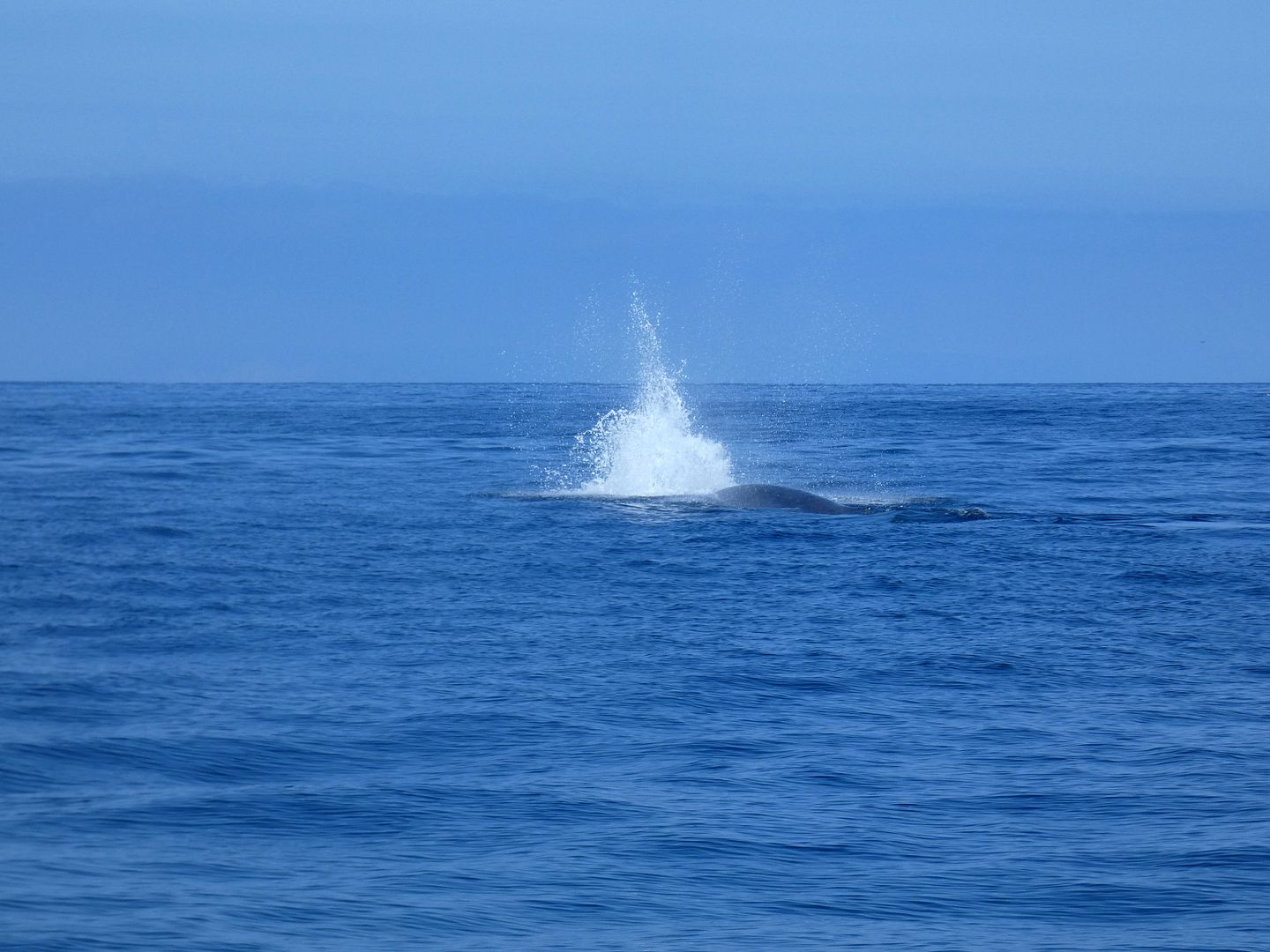
We were glad we did...

...because it was a good one, tailfin and all.

It's technically blue whale season in Southern California—but it's still incredibly rare to see them. Capt. Dave's hadn't spotted one in 10 days—and they're out there daily, several times a day.
The largest animals on the planet, blue whales can weigh over 300,000 pounds (150 tons)—and grow to be over 100 feet in length.
They're so big, you only see a fraction of them from the surface (if you get to see them at all). That is, unless they breach (a.k.a. leap out of the water).
The blue whale we saw was diving down to feed on crustaceans called krill—as all blue whales do.
It's funny, the biggest mammal in the world feeding on one of the tiniest sea creatures.
They open their mouths wide and swallow entire swarms of these tiny, shrimp-like creatures—the biggest mouthful that any animal on the planet takes. Then they spit the water back out, filtering it through their baleen plates so they can eat the krill without swallowing a lot of water.
A blue whale's throat is surprisingly small—maybe the size of a grapefruit—so even if you ended up in its mouth, it wouldn't be able to actually swallow you.
But this blue whale didn't even seem to notice us—which is incredibly unusual, given the popularity of whale watching. Usually, whales with either avoid or approach.
Marine biologists rarely see whales unaffected by boat traffic.
We probably could've spent all day out there, marveling at nature and the sea—but the safari was only scheduled to last two and a half hours, so we needed to head back to dry land.
Although I'd seen dolphin pods before, I'd never been that close to a whale. And I'd never seen a blue whale.
I may never see one again—but boy, I'm glad I got this experience under my belt.
Related Posts:

No comments:
Post a Comment